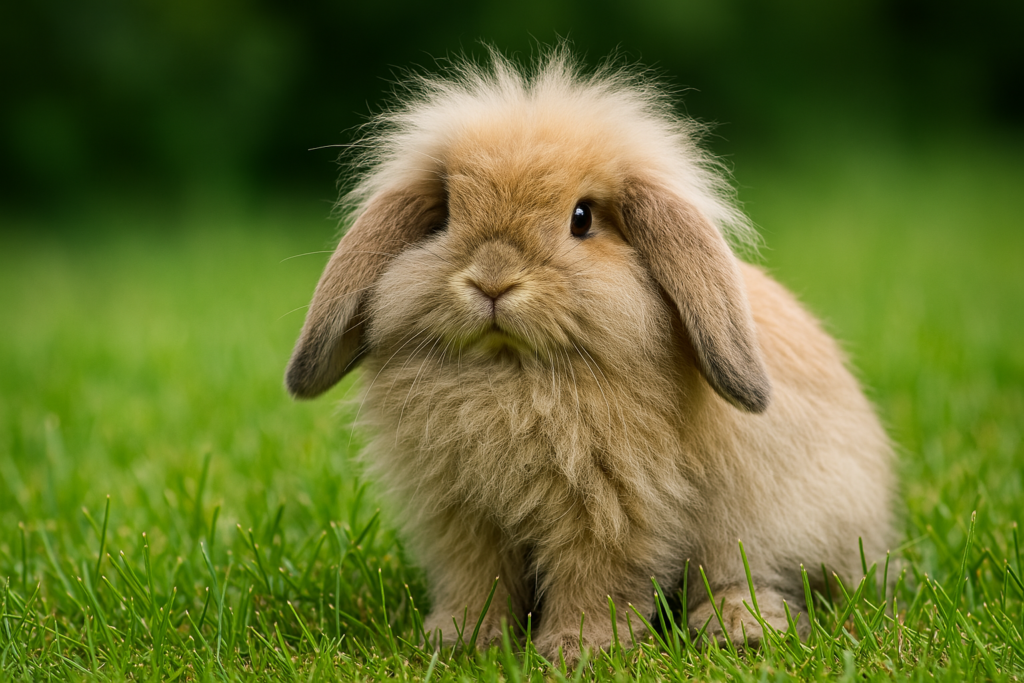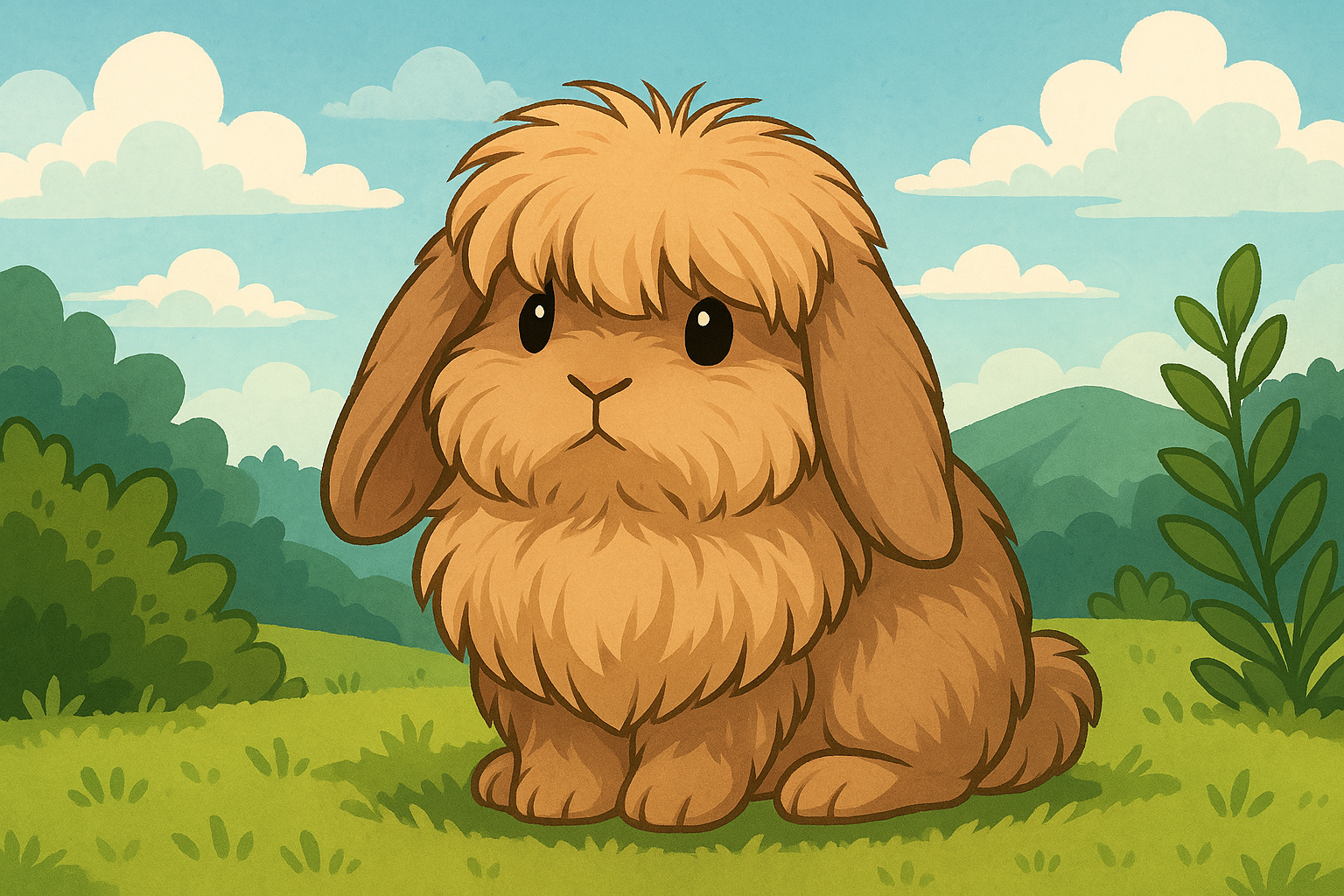A rare and attractive breed, the Teddywidder Rabbit has won over rabbit lovers all over the world. This dwarf rabbit, which is well-known for its characteristic long, fluffy fur and adorable lop ears, has a gentle disposition in addition to an adorable appearance. We’ll go over the Teddywidder rabbit’s history, traits, maintenance needs, and things prospective owners should think about in this extensive guide.
History of the Teddywidder Rabbit
The Teddywidder rabbit follows its roots back to Germany, where breeders pointed to form a little, long-haired rabbit with a neighborly mien. By crossbreeding different long-haired and overshadow rabbit breeds, they created the Teddywidder, which rapidly picked up notoriety over Europe for its one of a kind appearance and tender nature.
In spite of its developing fan base, the Teddywidder remains unrecognized by major rabbit breeding affiliations, such as the American Rabbit Breeders Affiliation (ARBA). This need of official acknowledgment is somewhat due to concerns approximately the breed’s well-being and welfare, stemming from its particular physical characteristics.
Physical Characteristics
Weighing between 3 to 4 pounds (1.3 to 1.8 kilograms) at development, the Teddywidder is classified as a predominate breed. Its most eminent include is its long, thick hide, which can develop over 2 inches (5 centimeters) in length, covering its whole body, counting a charming periphery over its eyes. This extravagant coat comes in different colors, counting white, cream, brown, and blue-grey.
Another recognizing characteristic is the Teddywidder’s hack ears, which hang down on either side of its head. These ears not as it were contribute to the breed’s cute appearance but moreover have suggestions for its well-being and care, as we’ll talk about afterward.
Temperament and Behavior
Teddywidders are known for their friendly, clever, and caution nature. They are diurnal creatures, making them appropriate companions for families with children. Their trusting and perky mien permits them to create solid bonds with their human caregivers, and they flourish on standard interaction and mental incitement.
Like all rabbits, Teddywidders have a tall encourage for work out and can ended up bored rapidly. Giving them assorted exercises and openings for investigation is fundamental to keeping them cheerful and sound.
Housing Requirements
In spite of their little measure, Teddywidders require adequate space to move and play. A roomy walled in area is fundamental to suit their require for work out. The walled in area ought to incorporate basic things such as a water trough, nourishment bowls, feed rack, straw and feed for bedding, and a resting hovel for withdrawal.
Rabbits are exceedingly social creatures and ought to not be kept alone. It’s prudent to house them in congruous bunches, such as a fixed male with one to three fixed females, to guarantee their well-being and avoid depression.
Grooming
The Teddywidder’s long, fine hide requires persevering preparing to avoid tangling and related skin issues. Customary brushing, at least twice a week, is vital to keep their coat in great condition. Amid molting periods in spring and harvest time, more visit prepping may be required.
Their hack ears moreover require customary checks and cleaning to anticipate contaminations. Due to the decreased wind current in their ear canals, Teddywidders are inclined to earwax buildup, which can lead to agonizing contaminations in the event that cleared out untreated.
Dietary Needs
A adjusted count of calories is significant for keeping up the well-being of a Teddywidder rabbit. They eat less ought to basically comprise of high-quality roughage, which helps in assimilation and dental well-being. New vegetables, such as carrots, cabbage, kale, and chime peppers, can be advertised to supply extra supplements.
It’s critical to dodge bolstering youthful rabbits beneath six months of age natural products and vegetables, as their stomach related frameworks are not however prepared to handle these nourishments. New water ought to continuously be accessible, and giving branches and twigs for biting can offer assistance to keep their teeth in great condition.
Health Considerations
Whereas Teddywidders are verifiably cute, their special physical characteristics can incline them to certain well-being issues. The breed’s little estimate and particular highlights have driven a few well-being concerns that potential proprietors ought to be mindful of.
- Dental Issues
The compact jaw structure of the Teddywidder can result in dental misalignments, driving to challenges in eating and potential weight misfortune. Standard veterinary check-ups are fundamental to screen and address any dental issues that will emerge.
- Ear Infections
The breed’s cut ears are inclined to diseases due to decreased wind current within the ear canals and expanded earwax buildup. Normal ear cleaning and checking for signs of contamination, such as head shaking or scratching, are imperative to avoid complications.
- Eye Problems
The long hide around the Teddywidder’s confront can now and then deter their vision and lead to eye aggravations or diseases. Trimming the hide around their eyes and guaranteeing their living environment is clean can offer assistance relieve these issues.
- Heat Sensitivity
In spite of their thick coats, Teddywidders are delicate to tall temperatures. Amid warmer months, it’s pivotal to supply them with a cool, shaded environment and guarantee they have get to new water to anticipate heat-related ailments.
Ethical Considerations and Adoption

Due to the well-being challenges related with the Teddywidder breed, it’s imperative to consider the moral suggestions of breeding and obtaining these rabbits. Supporting mindful breeding hones that prioritize the well-being and well-being of the creatures is fundamental.
Embracing from creature covers may be a compassionate elective, as numerous rabbits, counting Teddywidders, are in require of loving homes. By choosing to embrace, you’ll be able to give a domestic to a rabbit in require and dishearten untrustworthy breeding hones.
Conclusion
A charming and loving breed, the Teddywidder rabbit demands committed care and attention. Despite their charming physical attributes, they have certain care and health requirements that prospective owners must be ready to meet.
You can guarantee that your Teddywidder rabbit lives a happy, healthy life as a treasured member of your family by being aware of the breed’s requirements and making a commitment to responsible management.
Read more blogs related to this topic

